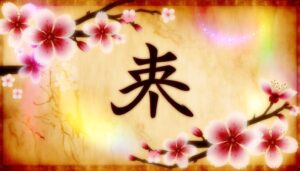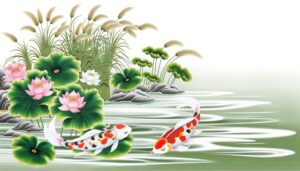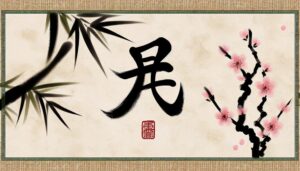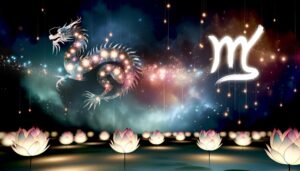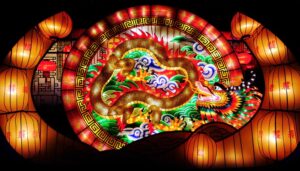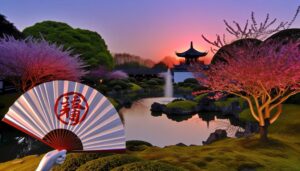What Does the Dragon Symbol in Chinese New Year Mean?
The Chinese New Year dragon symbol is a profound emblem of power, strength, and good fortune. Originating from ancient folklore and linked to imperial authority, it represents wisdom, protection, and prosperity.
Dragons are revered for their control over water, rainfall, and floods, as mentioned in the 'Book of Changes' (I Ching). During Chinese New Year, dragon dances are performed to invoke communal unity and well-being.
These performances, utilizing modern materials and technology, continue to captivate audiences globally, reflecting the cultural and historical significance of this auspicious creature. To uncover deeper insights into this enduring symbol, there's much more to explore.
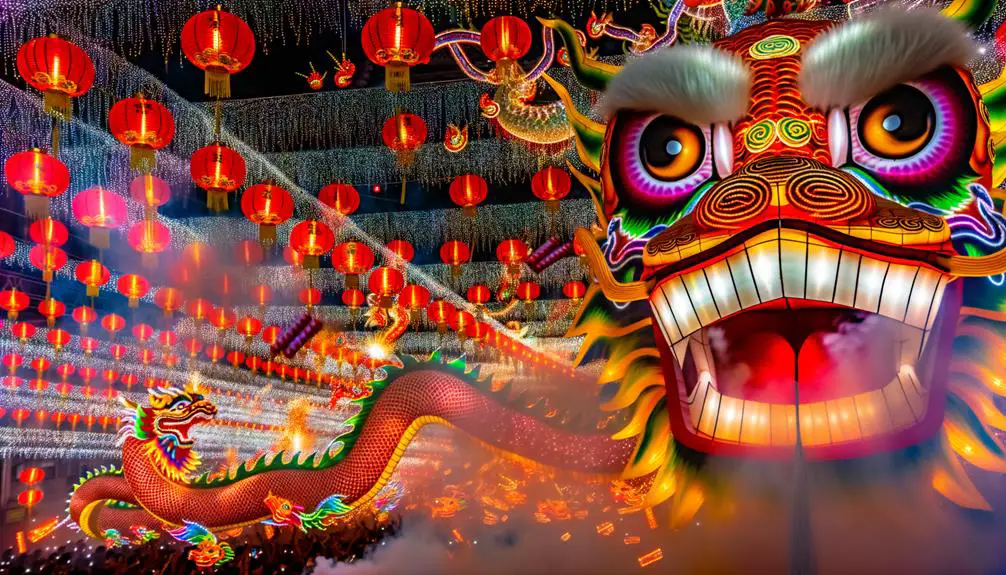
Key Takeaways
- The Chinese New Year dragon symbolizes power, strength, and good fortune.
- Dragons are revered for their wisdom, benevolence, and protective qualities.
- The dragon dance tradition symbolizes prosperity and fosters community unity.
- Modern dragon displays use LED lights and synchronized movements, maintaining traditional symbolism.
- Dragon-making craftsmanship is preserved through community efforts and modern adaptations.
Origin and Mythology
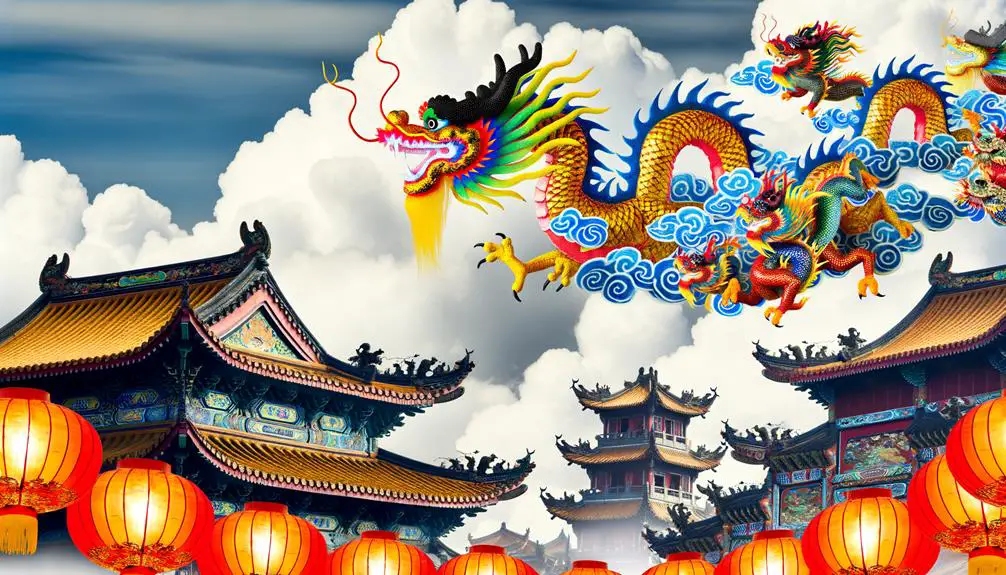
Tracing its roots back thousands of years, the dragon symbol in Chinese New Year mythology embodies a rich tapestry of ancient folklore, imperial tradition, and cultural reverence.
Originating from early Chinese cosmology, dragons were believed to control water, rainfall, and floods, signifying their integral role in agricultural societies. Ancient texts like the 'Book of Changes' (I Ching) further illustrate the dragon's embodiment of power and transformation.
During the Han Dynasty (206 BCE–220 CE), dragons emerged as symbols of imperial authority, suggesting a divine connection between the emperor and the heavens.
Additionally, regional myths, such as the legend of Nian, a beast driven away by dragon imagery, underscore the cultural depth and historical longevity of the dragon's presence in Chinese New Year celebrations.
Symbolism and Meaning
The dragon symbol in Chinese New Year is imbued with profound cultural significance, representing power, strength, and good fortune.
Historically, dragons are revered as auspicious creatures that control rainfall and symbolize imperial authority.
Their attributes, including wisdom, benevolence, and protection, resonate deeply within Chinese culture, underscoring their integral role in celebrations and traditions.
Cultural Significance
In Chinese culture, the dragon symbolizes power, strength, and good fortune, deeply intertwined with historical myths and folklore. Traditionally, dragons are revered as benevolent creatures bringing prosperity and protection. Their presence during the Chinese New Year reflects societal aspirations for growth and harmony. The dragon dance, a centerpiece of the celebration, embodies communal unity and cultural pride.
| Cultural Aspect | Significance |
|---|---|
| Power | Dragons are seen as omnipotent beings. |
| Strength | Symbolizes resilience and vigor. |
| Good Fortune | Represents luck and prosperity. |
| Communal Unity | Dragon dances foster community spirit. |
Through these symbolic representations, dragons perpetuate a legacy of hope and collective well-being, integral to Chinese cultural identity.
Dragon Attributes
Many attributes of the Chinese dragon convey profound cultural symbolism, reflecting its role as a multifaceted emblem of wisdom, authority, and celestial influence.
The dragon's serpentine body, often adorned with scales, represents adaptability and fluidity, suggesting the ability to navigate diverse situations with grace.
Its fearsome claws and horns symbolize power and dominance, while its pearl often signifies prosperity and spiritual enlightenment.
Unlike Western dragons, which are frequently depicted as malevolent, the Chinese dragon is an auspicious creature associated with rainfall, essential for agriculture and life.
The dragon's ability to fly without wings symbolizes its celestial nature, linking it to the heavens and divine will.
This intricate symbolism underscores the dragon's revered status in Chinese folklore and tradition.
Dragon Dance Tradition
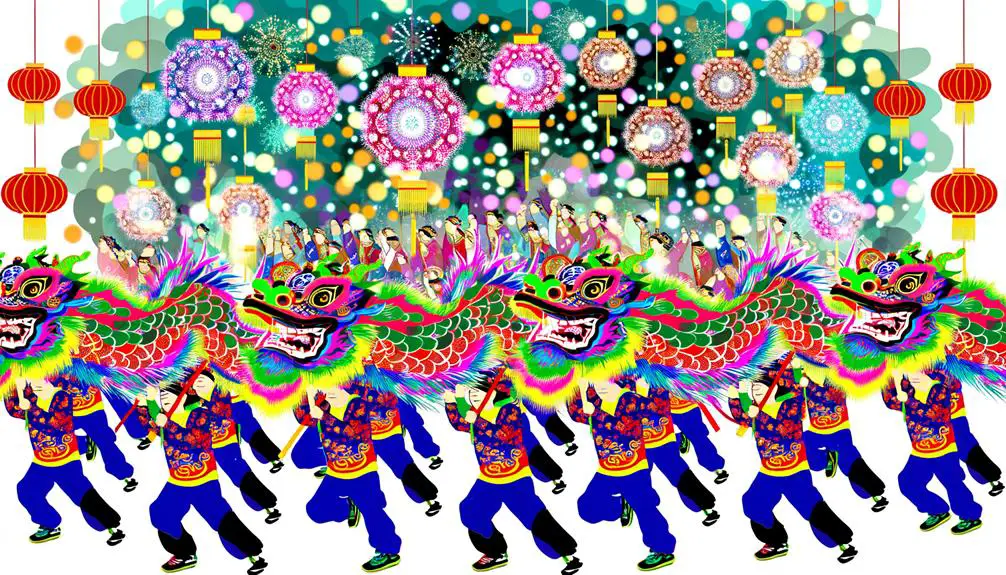
The Dragon Dance is a cornerstone of Chinese New Year celebrations. It has its origins rooted in ancient agricultural rituals aimed at invoking rain and bountiful harvests, symbolizing prosperity and good fortune.
The intricate dance movements are executed by a team of skilled performers. They embody the dynamic and sinuous nature of the dragon, reflecting the creature's revered status in Chinese mythology.
Understanding the cultural significance of these choreographed sequences offers profound insight into the communal values and historical traditions that continue to shape contemporary celebrations.
Origin and Significance
Emerging from ancient Chinese folklore, the Dragon Dance tradition embodies a rich tapestry of cultural significance and historical depth that continues to captivate audiences worldwide.
Originating during the Han Dynasty (206 BCE-220 CE), it symbolizes power, dignity, and auspiciousness. The dragon, an emblem of imperial authority and a harbinger of prosperity, plays a crucial role in rituals intended to ward off evil spirits and summon good fortune for the community.
This elaborate performance, once reserved for royal ceremonies, has evolved into a communal celebration, reflecting societal values of unity and collective well-being. Its enduring appeal lies in its ability to connect contemporary audiences with an illustrious past, emphasizing the continuity of cultural heritage and communal harmony.
Dance Movements Explained
Intricate and meticulously choreographed, the dance movements of the Dragon Dance tradition are imbued with symbolic gestures that reflect the mythical creature's attributes of power, grace, and essential.
Each sequence involves complex footwork and coordinated body movements, symbolizing the dragon's dynamic energy and auspicious presence. Performers manipulate the dragon's body on poles, creating fluid motions that mimic natural elements, such as water and wind.
The dance often includes synchronized spirals and undulations, evoking the dragon's mythical flight. Culturally, these movements are not merely performative but are believed to summon prosperity and dispel malevolent spirits.
This rich tradition, rooted in ancient rituals, continues to be a focal point in Chinese New Year celebrations, embodying deep cultural and spiritual significance.
Types of Dragon Costumes
Among the various dragon costumes featured during Chinese New Year celebrations, each distinct style embodies unique cultural elements and regional traditions. Traditional dragon costumes, often crafted with silk and adorned with sequins, exude opulence and symbolize prosperity.
The Southern-style dragon is characterized by its vibrant colors and intricate patterns, reflecting the artistic heritage of Guangdong province. In contrast, the Northern-style dragon features a more robust and imposing design, symbolizing strength and power.
Additionally, modern interpretations have incorporated LED lights, bringing a contemporary flair to the age-old tradition. Each costume, whether traditional or modern, serves as a vessel for cultural expression, preserving ancient customs while adapting to contemporary tastes, thereby ensuring the longevity and relevance of this iconic symbol.
Regional Variations
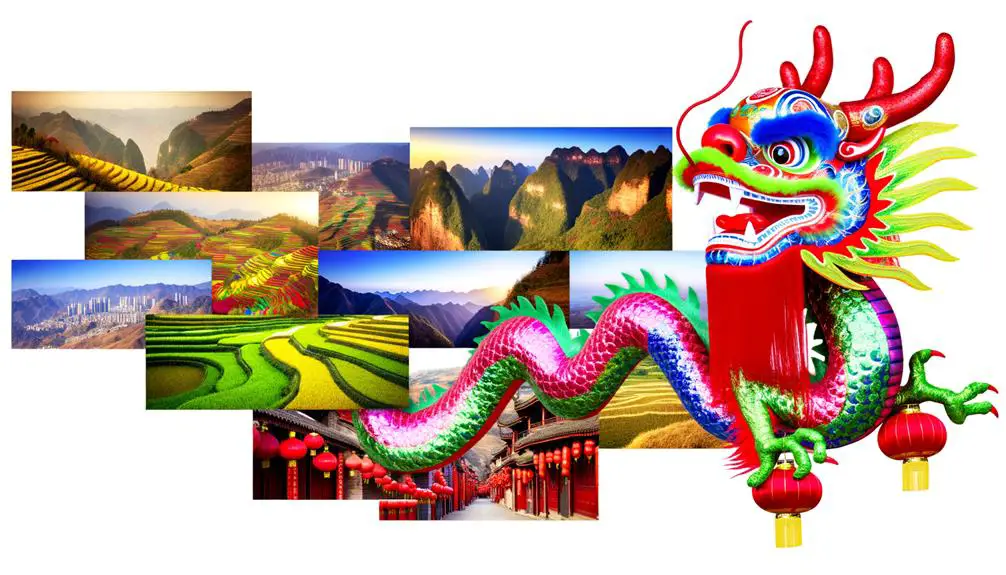
Chinese New Year dragon performances exhibit significant regional variations, each reflecting the unique cultural heritage, historical influences, and artistic traditions of their respective locales. These regional distinctions enrich the cultural tapestry of the festival and highlight the diversity within Chinese traditions.
Notable variations include:
- Northern China: Emphasizes powerful, robust dragon movements, often associated with martial prowess and strength.
- Southern China: Features more fluid, serpentine movements, symbolizing grace and agility.
- Hakka Communities: Incorporate bamboo and paper constructions, focusing on lightweight, intricate designs.
- Fujian Province: Dragons are often adorned with bright, elaborate decorations, reflecting the region's vibrant artistic heritage.
These variations not only showcase regional artistic expression but also convey localized interpretations of mythology and symbolism, offering a deeper understanding of Chinese cultural diversity.
Modern Celebrations
Modern celebrations of the Chinese New Year dragon symbol seamlessly blend tradition with contemporary elements, reflecting both the enduring cultural significance and evolving practices of this ancient festival.
Today, urban parades feature elaborate dragon dances that incorporate modern materials and technology, including LED lights and synchronized movements, enhancing the visual spectacle.
Social media platforms play a pivotal role in spreading the festivities globally, allowing for virtual participation and engagement.
Despite these modern adaptations, the dragon remains a powerful emblem of strength, prosperity, and good fortune.
Community efforts to preserve traditional craftsmanship in dragon-making and the continued reverence for this symbol underscore its deep-rooted cultural importance, ensuring that the dragon's legacy endures in a rapidly changing world.
Conclusion
The dragon, embodying a rich tapestry of mythology, symbolism, and regional diversity, breathes life into Chinese New Year celebrations. Through the mesmerizing dragon dance, vivid costumes, and modern interpretations, this majestic creature bridges ancient traditions with contemporary festivities.
The dragon's sinuous form, shimmering scales, and powerful presence not only captivate audiences but also reinforce cultural identity, prosperity, and unity. Consequently, the dragon remains an enduring emblem of China's heritage, resonating deeply within the collective consciousness.

